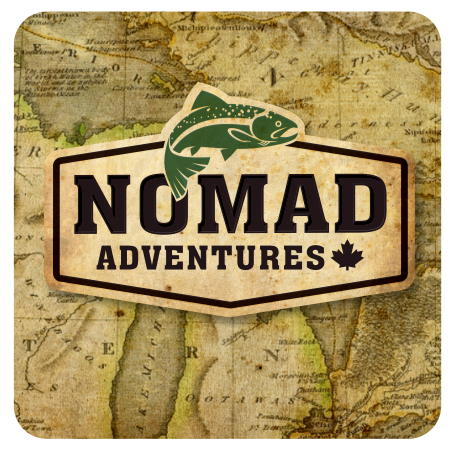|
An interesting perspective on the Lake Huron salmon fishery from nearly four years ago, reads fairly accurately in consideration of what is happening today. Not 100% in agreement with what is going on with Lake Huron salmon is widespread. Some areas appear to be making a comeback in the Ontario region at least. Coho's, Pinks, Chinook, and yes even some Atlantics have shown up in recent years... thanks LSSU! Not big numbers or size by any means but a welcome sight nonetheless. Collapse of Lake Huron salmon fishery offers lessons Jeff Alexander | Muskegon Chronicle By Jeff Alexander | Muskegon Chronicle Follow on Twitter on April 19, 2011 at 12:00 PM The Great Lakes provide an important food source for the region and the country. As such, the productivity of the lakes depends on a variety of human and environmental factors. The food web and interlocking food chains in the lakes are complex and ever-changing. In the mid-1990s, when disease ravaged the Lake Michigan chinook salmon fishery, anglers flocked to Lake Huron . The glory days of Lake Huron’s salmon fishery lasted roughly a decade, until a combination of factors — all driven by human activities — caused the salmon population to crash in 2003-04. It has not recovered. Michigan anglers who fished out of 10 Lake Huron ports last year caught 3,200 chinook salmon, a record low. That was a 95 percent drop from the average annual catch of 75,000 at those same ports between 1986 and 2003, according to state data. “Last year ... about as low as it could get,” said Jim Johnson, a research biologist for the Michigan Department of Natural Resources. Lake Huron’s salmon crisis is a cautionary tale for Lake Michigan’s still-thriving salmon fishery: The lakes share many of the environmental factors that caused Lake Huron’s salmon fishery to collapse. Huge numbers of foreign quagga mussels are wreaking havoc on the food chain in both lakes. The number of prey fish, the small fish that salmon and other large fish eat, has plummeted in recent years. The fall of Lake Huron’s chinook population was quick, dramatic and painful — for the fish, anglers and coastal communities that reaped millions of dollars in economic benefits from the fishery. THE SERIES
A special report on the health of Lake Michigan salmon— a sport fishery that almost never happened. Quagga mussels: 950 trillion tiny time bombs in our lakes? Profile: Former DNR director Howard Tanner, who decided to create Michigan’s salmon fishery in the 1960s. Red flags signal possible trouble for Lake Michigan salmon 'Net pens' help young fish survive trip to Lake Michigan So what happened? In a nutshell, there were too many salmon and not enough food to sustain them, according to state studies. Zebra and quagga mussels, which ocean freighters unknowingly hauled into the Great Lakes in the late 1980s, consumed huge quantities of plankton in Lake Huron. That robbed fish, particularly alewives, of nutrients. Alewives are the primary food source for chinook. As the foreign mussels were decimating the base of Lake Huron’s food chain, an oversized salmon population was depleting the alewife population. Fish managers in Michigan and the province of Ontario had grossly underestimated the number of naturally reproducing salmon in Lake Huron in the late 1990s, which led to overstocking of hatchery-raised fish, according to state studies. The result: Millions more salmon than the lake could support. Alewives were doomed, as were salmon. “The alewife population, caught between rising predation from a reproducing Chinook salmon population and starvation rations caused by the collapse of plankton, almost disappeared in 2003-04,” according to a recent state report. “Chinook were unable to shift their diets (to other prey fish), leading to disastrous consequences for Lake Huron’s chinook salmon recreational fishery,” according to the DNR report. Scientists who monitor chinook populations said there are two important differences between the Lake Michigan and Lake Huron fisheries: • Fish managers have reduced the number of chinook salmon stocked in Lake Michigan by 25 percent since 2006 to preserve the alewife population and, in turn, the salmon fishery. Lake Huron’s oversized salmon population collapsed before biologists could intervene. • There are signs Lake Michigan’s alewife population is recovering. Although the volume of adult alewives in the shallow areas of Lake Michigan hit a record low in 2010, the volume of young alewives (less than 1 year old) in deeper waters increased dramatically last year. In Lake Huron, alewives have all but disappeared. The collapse of Lake Huron’s chinook fishery cost many coastal communities millions of dollars in lost tourism revenue, according to state data. With few salmon left to catch, the number of anglers booking charters dropped by half. Bait shops closed, charter boat operators went out of business and restaurants, hotels and bars took a financial hit, Johnson said. Consequently, native fish species in Lake Huron rebounded after the number of salmon and alewives (neither of which is native to the Great Lakes) plummeted. Lake Huron now is gaining a reputation for having a fantastic walleye fishery. Anglers are catching just as many fish as they did during the heyday of the salmon fishery; they just aren’t catching many salmon. “Today, instead of having essentially a one-species fishery diversity is the key,” said Frank Krist, chairman of the DNR’s Lake Huron Citizens Advisory Committee. “Toss in an occasional Atlantic salmon, a few browns (trout), some to very many walleye depending on location, and the result is a very productive fishery.” Comments are closed.
|
FISHING NEWS ONTARIOOntario and Great Lakes region salmon, steelhead, and migratory trout fishing articles, information, news, and reports. Stay up to date on our most recent trips, events, tournaments, and general news on adventure fishing and kayak fishing in Ontario and Canada. Archives
April 2021
Categories
All
Links |



 RSS Feed
RSS Feed